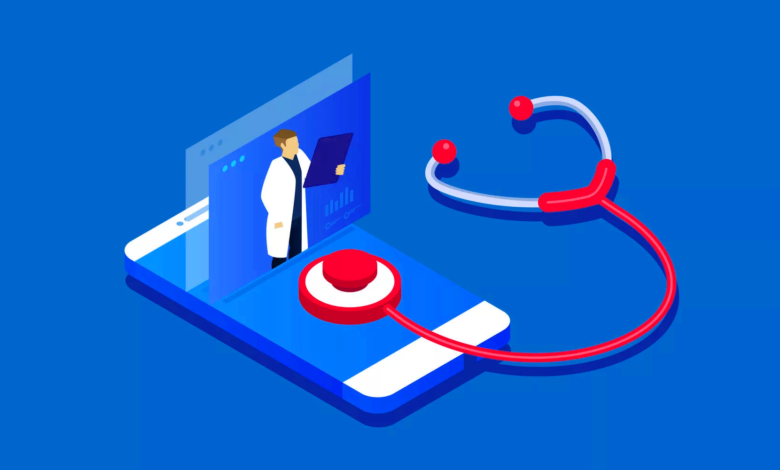Can smarter technology make virtual healthcare work for all?

Real alleviation is provided through virtual health care. Patients appreciate the ease of having access to medical expertise and specialized care from the comfort of their own homes. Physicians like how simple it is to organize care, request team input, and monitor patients with chronic conditions with the help of the software. The cost savings associated with fewer hospital readmissions, ER visits, and patient no-shows are welcomed by administrators.
As a result, it’s no surprise that 50 percent of healthcare executives believe virtual delivery will account for a quarter of all care by 2040, including inpatient and outpatient care.
Read More: Covid-19: 12 Things to Keep in Mind If You are Working Remotely
Virtual health, on the other hand, is not without its drawbacks. One video conversation with a provider that is of low quality might have a negative impact on the patient’s whole provider experience. Servers that are overburdened by remote requests may be unable to give timely access to critical data. Each remote user increases the susceptibility of the system to hackers.
The fact that Lenovo is a technology solution supplier to over 3,000 healthcare institutions around the world means that the company is well aware of these issues. And, in collaboration with the IT departments that have assisted in the acceleration of the transition to virtual healthcare, we are freeing them of their responsibilities. Lenovo is optimizing the IT infrastructure that supports virtual patient care, ensuring that it remains connected, continuous, coordinated, and secure at all times.
Connected and continuous
Hospitals often rely on a diverse range of computing, networking, and storage technologies acquired from a diverse range of suppliers in order to upload, update, analyze, and preserve the vast amount of data generated by patients and required by legislation. As a result, interoperability issues have arisen. In these complicated systems, friction can build up, making access and performance more difficult to achieve.
In order to do this, the Fraser Health Authority, the largest healthcare system in the Canadian province of British Columbia, switched from a three-tier design to Lenovo’s flexible, scalable, and dependable hyperconverged platform. Fraser Health’s 12 hospitals benefit from its software defined infrastructure solution, which consolidates all of their computing, networking, and storage needs into a single virtualized box. Furthermore, it enables Fraser Health to scale up capacity almost instantly, as they learned in early 2020 when pandemic-induced lockdowns swept across much of the country. Fraser Health was able to increase their Remote Desktop Services environment from 1,000 remote workers to 10,000 remote workers in a short period of time and with minimal disruption.
In the healthcare industry, virtual desktop infrastructure (VDI) as-a-service, such as TruScale for Hosted Desktops with Nutanix, is assisting information technology (IT) departments in ensuring that patient care is not jeopardized regardless of the size of the healthcare system or the speed with which the disruption occurs.
Read More: Coronavirus Impact: Work From Home is Best during Covid-19
Connected and Coordinated
When used in conjunction with Lenovo Analytics & AI and scalable storage solutions, our infrastructure may assist healthcare businesses in extracting insight from exabytes of data in minutes rather than hours. This enables clinicians to make more accurate diagnoses and to adapt patient treatments, while also enabling healthcare organizations to enhance their efficiencies and minimize the cost of providing care to their patients.
Lenovo, on the other hand, enhances outcomes on a more deeply human scale as well by optimizing digital connections. Due to the fact that intelligent collaboration technologies like as Virtual Rounding give high-quality facetime, doctors may devote more time to their patients. Patients grow more candid as time goes on, and the margin for diagnostic error shrinks. Team communication becomes more smooth as a result, which helps to reduce provider burnout while also providing patients with more continuous and coordinated treatment.
Connected and Secure
Malware. Cyberattacks. Theft of personal information. Administrators suffer from security-related migraines since the healthcare industry is the most profitable area for cybercriminals to target.
We create security that protects our customers from the chip to the cloud and everywhere in between. The most strict security standards are adhered to by every vendor in our supply chain, as well as by every component that we procure. Users are protected from malicious WiFi and suspicious downloads by our configurable security solutions, which make it simple for your IT staff to set up guardrails to keep them safe. Even more straightforward: Lenovo’s end-to-end Healthcare Services and DaaS enable you to outsource security and lifecycle management to a trusted partner.
Lenovo is unable to treat the ordinary cold. However, by streamlining virtual care delivery, our technologies have the potential to maintain the advances that have resulted in improved patient outcomes.








One Comment